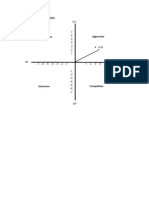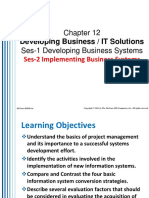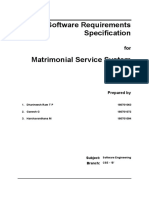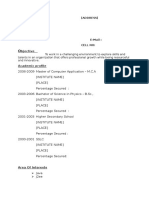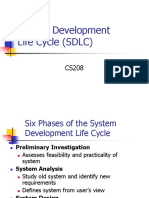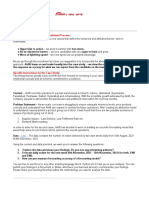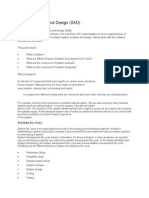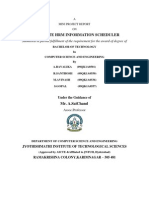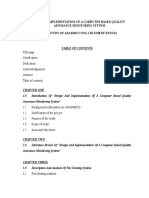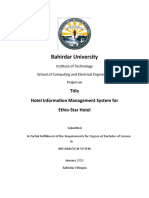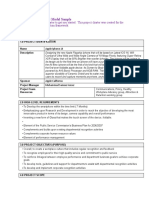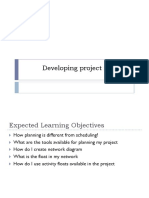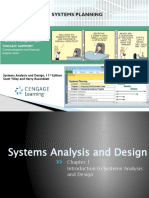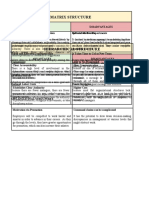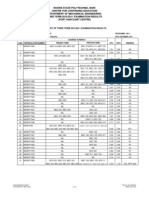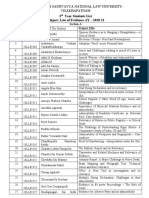Systems Analysis and Design 8th Edition
Chapter 1 Introduction to Systems Analysis and Design
�Chapter Objectives
Discuss the impact of information technology on business strategy and success Define an information system and describe its components Explain how profiles and models can represent business functions and operations Explain how the Internet has affected business strategies and relationships
2
�Chapter Objectives
Identify various types of information systems and explain who uses them Distinguish between structured analysis, object-oriented analysis, and agile methods Compare the traditional waterfall model with agile methods and models Discuss the role of the information technology department and the systems analysts who work there
3
�Introduction
Companies use information as a weapon in the battle to increase productivity, deliver quality products and services, maintain customer loyalty, and make sound decisions. Information technology can mean the difference between success and failure
4
�The Impact of Information Technology
Information Technology (IT)
Combination of hardware and software products and services that companies use to manage, access, communicate, and share information
The Future of IT
Will see robust growth for at least a decade The greatest need will be for systems analysts, network administrators, data communications analysts, and software engineers
5
�The Impact of Information Technology
The Role of Systems Analysis and Design
Systems Analysis and Design
Step-by-step process for developing high-quality information systems
Systems Analyst
Plan, develop, and maintain information systems
�The Impact of Information Technology
Who develops Information Systems?
In-house applications Software packages Internet-based application services Outsourcing Custom solutions Enterprise-wide software strategies How versus What
7
�Information System Components
A system is a set of related components that produces specific results A Mission-critical system is one that is vital to a companys operations Data consists of basic facts that are the systems raw material Information is data that has been transformed into output that is valuable to users Information systems have five key components: hardware, software, data, processes, and people
8
�Information System Components
Hardware
Is the physical layer of the information system Moores Law
Software
System software Application software Enterprise applications
�Information System Components
Software
Horizontal system Vertical system Legacy systems
Data
Tables store data By linking the tables, the system can extract specific information
10
�Information System Components
Processes
Describe the tasks and business functions that users, managers, and IT staff members perform to achieve specific results
People
Stakeholders Users, or end users
11
�Understanding The Business
Business Process Modeling Business Profile Business Models
Business model Business process Business process reengineering (BPR)
12
�Understanding The Business
New Kinds of Companies
Production-oriented Service-oriented Internet-dependent Dot-com (.com) Brick-and-mortar
13
�Impact of the Internet
E-Commerce or I-Commerce B2C (Business-to-Consumer) B2B (Business-to-Business)
EDI Extensible markup language (XML) Supplier relationship management (SRM)
14
�Impact of the Internet
Web-Based System Development
WebSphere .NET Web services Internet-based systems involve various hardware and software designs
15
�How Business Uses Information Systems
In the past, IT managers divided systems into categories based on the user group the system served
Office systems Operational systems Decision support systems Executive information systems
16
�How Business Uses Information Systems
Enterprise computing systems
Support company-wide operations and data management requirements Enterprise resource planning (ERP) Many hardware and software vendors target the enterprise computing market
17
�How Business Uses Information Systems
Transaction processing systems
Involve large amounts of data and are missioncritical systems Efficient because they process a set of transaction-related commands as a group rather than individually
18
�How Business Uses Information Systems
Business support systems
Provide job-related information to users at all levels of a company Management information systems (MIS) Radio frequency identification (RFID) What-if
19
�How Business Uses Information Systems
Knowledge management systems
Called expert systems Simulate human reasoning by combining a knowledge base and inference rules Many knowledge management systems use a technique called fuzzy logic
20
�How Business Uses Information Systems
User productivity systems
Technology that improves productivity Groupware
Information systems integration
Most large companies require systems that combine transaction processing, business support, knowledge management, and user productivity features
21
�Information System Users and Their Needs
22
�Systems Development Tools
Modeling
Business model Requirements model Data model Object model Network model Process model
23
�Systems Development Tools
Prototyping
Prototype Speeds up the development process significantly Important decisions might be made too early, before business or IT issues are thoroughly understood Can be an extremely valuable tool
24
�Systems Development Tools
Computer-Aided Systems Engineering (CASE) Tools
Also called computer-aided software engineering CASE tools Can generate program code, which speeds the implementation process
25
�Overview of Systems Development Methods
Structured Analysis
Systems development life cycle (SDLC) Predictive approach Uses a set of process models to describe a system graphically Process-centered technique Waterfall model
26
�Overview of Systems Development Methods
Structured Analysis
Deliverable or end product Disadvantage in the built-in structure of the SDLC, because the waterfall model does not emphasize interactivity among the phases This criticism can be valid if the SDLC phases are followed too rigidly Adjacent phases usually interact
27
�Overview of Systems Development Methods
Structured Analysis
The SDLC model usually includes five steps
Systems planning Systems analysis Systems design Systems implementation Systems support and security
28
�Overview of Systems Development Methods
Structured Analysis
Systems Planning
Systems planning phase Systems request begins the process & describes problems or desired changes Purpose of this phase is to perform a preliminary investigation Key part of preliminary investigation is a feasibility study
29
�Overview of Systems Development Methods
Structured Analysis
Systems Analysis
Deliverable is the System requirements document
Systems Design
Deliverable is system design specification Management and user involvement is critical
30
�Overview of Systems Development Methods
Structured Analysis
Systems Implementation
New system is constructed
Systems Support and Security
A well-designed system must be secure, reliable, maintainable, and scalable Most information systems need to be updated significantly or replaced after several years of operation
31
�Overview of Systems Development Methods
Object-oriented Analysis
Combines data & processes that act on the data into things called objects Object is a member of a class Objects possess properties Methods change an objects properties
32
�Overview of Systems Development Methods
Object-Oriented Analysis
A message requests specific behavior or information from another object Usually follow a series of analysis and design phases that are similar to the SDLC Interactive model
33
�Overview of Systems Development Methods
Agile Methods
Are the newest development Emphasizes continuous feedback Iterative development Agile community has published the Agile Manifesto Spiral model
34
�Overview of Systems Development Methods
Agile Methods
Agile process determines the end result Other adaptive variations and related methods exist Two examples are Scrum and Extreme Programming (XP) Analysts should understand the pros and cons of any approach before selecting a development method
35
�Overview of Systems Development Methods
Other Development Methods
Joint application development (JAD) Rapid application development (RAD) Might encounter other systems development techniques Rational Unified Process (RUP) Microsoft Solutions Framework (MSF)
36
�Systems Development Guidelines
Develop a project plan Involve users and listen carefully to them Use project management tools to identify tasks and milestones Develop accurate cost and benefit information Remain flexible
37
�Information Technology Department
38
�The Systems Analyst Position
Responsibilities
Translate business requirements into IT projects
Required Skills and Background
Solid technical knowledge, strong oral and written communication skills and analytic ability, and an understanding of business operations and processes
Certification
Important credential
39
�The Systems Analyst Position
Career Opportunities
Job titles Company organization Company size Corporate culture Salary, location, and future growth
40
�Chapter Summary
IT refers to the combination of hardware and software resources that companies use to manage, access, communicate, and share information The essential components of an information system are hardware, software, data, processes, and people Most companies offer a mix of products, technical and financial services, consulting, and customer support
41
�Chapter Summary
Systems analyst use modeling, prototyping, and computer aided systems engineering (CASE) tools Three popular system development approaches are structured analysis, object-oriented analysis (O-O), and agile methods, also called adaptive methods Regardless of the development strategy, people, tasks, timetables, and cost must be managed effectively using project management tools
42
�Chapter Summary
The IT department develops, maintains and operates a companys information systems Systems analysts need a combination of technical and business knowledge, analytical ability, and communication skills Systems analysts need to consider salary, location, and future growth potential when making a career decision
43
�Chapter Summary
Chapter 1 complete
44



